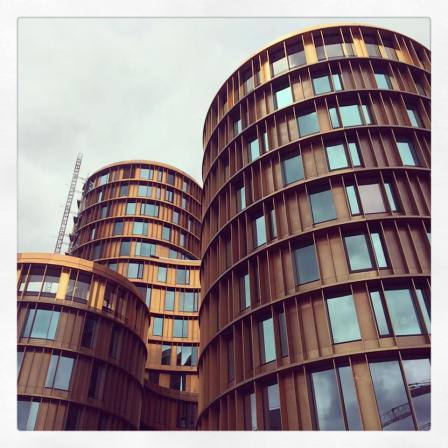Jan Carson's Blog, page 12
September 17, 2016
A Work in Progress: Literature Which References Dementia

A few weeks back I asked friends and colleagues to send me through a list of literary texts, plays and films, (both fiction and non-fiction), which reference or reflect Dementia. I was kind of blown away by just how much is out there and wanted to compile a list in case it’s of use to anyone who’s working in the same areas I’m interested in. This is most definitely a work in progress and I’m keen to add to it, and for it to be used as a resource for other. Please shoot me a wee email if you know of anything I’ve missed out on. (I’ll do my best to update the list). Some of the work on this list is absolutely fabulous and I’d thoroughly recommend taking a few hours out to read/watch/explore. I will say, as a bit of a caveat, not all of the examples listed are the best examples of good art or the most accurate depiction of living with Dementia BUT in the spirit of trying to be comprehensive, it’s good to have as full a list as possible. Hope this is helpful.
Prose Fiction:
Samantha Harvey – The Wilderness
Matthew Thomas – We Are Not Ourselves
Lisa Genova – Still Alice
Emma Healy – Elizabeth is Missing
Nicholas Sparks – The Notebook
Mordecia Richler – Barney’s Version
Jonathan Franzen – The Corrections
Alice Munro – “The Bear Came Over the Mountain” in Hateship, Friendship, Courtship, Love, Marriage
Jan Carson – “Den and Estie Do Not Remember the Good Times” in Children’s Children
Anne Enright – “Three Stories About Love” in The Long Gaze Back
Prose Non-Fiction:
Sally Magnuson – Where Memories Go
Prof. June Andrews – The One Stop Guide To Dementia
Martin Slevin – The Little Girl in the Radiator: Mum, Alzheimer’s and Me
Christine Bryden – Dancing With Dementia: My Story of Living Positively with Dementia
Susan Elliot- Wright – When Someone You Love Has Dementia
Lisa Jacobs Altman – Alzheimer’s Disease
Edward C. Willett – Diseases and People: Alzheimer’s Disease
Lia Mills – “Crib” in Winter Pages Vol. 1
Oliver James – Contented Dementia: 24-Hour Wraparound Care for Lifelong Well-being
Graphic Novels:
Paco Roca – Wrinkles
Poetry:
Edwin Mortier – The Stammered Songbook
Sarah Hesketh – The Hard Word Box
Leontia Flynn – Profit and Loss
Moyra Donaldson – Snakeskin Stilletos and Beneath the Ice
Film:
You’re Looking At Me Like I Live Here But I Don’t
Still Alice
Alive Inside
Away From Her
Lilting
Floride
Nebraska
The Iron Lady
The Notebook
The Savages
Barney’s Version
Blogs:
www.dementiablog.org
www.trebusprojects.org
Drama:
Florian Zeller – The Father
Glyn Maxwell – The Lion’s Face (Opera)
Nicola Wilson – Plaques and Tangles
Kim Noble – You’re Not Alone
Riding Lights Theatre Company – Simeon’s Watch
Barney Norris – Visitors
Trevor T. Smith – An Evening With Dementia
Ian Kershaw – Lost and Found
Tanya Meyers – Inside Out of Mind
Frank McGuinness – The Hanging Gardens


September 11, 2016
Talented (Online Friends Who Are Now Real) Friends: Ruth Gilligan
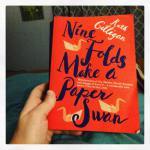
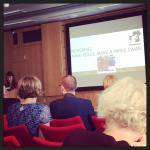

I first didn’t meet Ruth Gilligan at Belfast Book Festival two years ago. We were sitting in the same row at a rather annoying panel event. At one point I looked down the row, caught her eye and we both did a simultaneous, exasperated eye roll and then never actually met afterwards. I came home to a Twitter message which said, “I’m the eye-rolling girl at the end of your row. Sorry we never met in person.” Mostly, I entertain a faint distrust of people I meet on social media. It’s nothing personal. It’s just that I don’t actually know them and the only thing we have in common is books, or Casualty, or the mistaken belief that I’m going to follow them back and employ their services as a Life Coach or Personal Trainer. But, with Ruth, I knew we could actually be friends in real life. Shared irritations are always much stronger connections than shared likes.
Last month I picked up a copy of Ruth’s new novel, Nine Folds Make A Paper Swan. I didn’t know anything about it, except the eye-rolling girl with the good fringe had written it and it was going to be published by Tin House in the States, (the ex-Portlander in me still has a kind of bookish crush on Tin House). I read the back cover in the book shop and discovered it was about the Jewish community in Ireland. A few years back, I worked on a project about the Donnaghadee Kibbutz and the children who arrived in Belfast as part of the Kindertransport. Ever since I’ve been fascinated by the Jewish relationship with Belfast and the rest of Ireland. I couldn’t wait to read Ruth’s book.
Nine Swans is a beautifully written novel. You can tell Ruth has carried out extensive research. The references to anecdotes, characters and historical happenings in the Irish Jewish community are all based on information she was able to glean during visits to Ireland and the Irish diaspora in Jerusalem. The story itself drives the novel forwards but it really helped me locate events within an actual history to hear references to Lady Gregory, other recognisable Irish figures and places I’ve visited. Ruth has a very light touch with her research. She deftly weaves her character’s stores in alongside historical detail and the kind of beautiful tales and allegories which characterise Jewish culture. It’s almost impossible to notice the seams or, realise that Ruth herself, did not grow up in the Jewish tradition. Her fictional voice is as authentically Jewish as Jonathan Safran Foer’s in Everything is Illuminated, or Nicole Krauss’s in A History of Love, (two novels which are reminiscent of Nine Swans), while her Irishness adds another rich layer to the humour and history of the novel.
Nine Swans has three distinct sections and narrative voices, exploring three different characters as they try to find their place within both their Irish and Jewish identity. Each strand is distinct and also linked to the other story lines so the novel itself feels like a kind of overview of the Jewish community’s place in the last century or so of Irish history. I have to say, despite my own interest in early 20th century Jewish history, it was the most modern of the three strands which I found the most compelling. Here we meet Aisling, a lapsed Irish Catholic considering a conversion to Judaism after she falls in love with a Jewish man living in London. I found Ruth’s exploration of just how difficult Aisling was finding the process of leaving behind a faith she no longer believed in, richly reminiscent of my understanding of Judaism as both a cultural and personal identity as much as a faith. I found myself thinking about Aisling’s dilemma long after I finished the novel.
I finally got to meet Ruth in person last week. She was over in Belfast to launch an exhibition focused on the representation of Jewish culture in Irish literature at PRONI, (it’s fascinating, by the way, and well worth a visit). We had a cup of tea, a chicken goujon and a brief, but quite intense, conversation about what we like reading and what we don’t like reading and all the high and lows of writing books and it was really very wonderful to make an online friend into an actual real life friend. Sometimes Twitter is an agent of supreme good rather than evil. I hope I see more of Ruth in the not-online world. I have a lot of things I want to talk to her about and I can’t wait to read whatever she turns her hand to next.
Nine Folds Make A Paper Swan is published by Atlantic Books and available online at www.amazon.co.uk/Nine-Folds-Make-Paper-Swan/dp/1782398562


September 3, 2016
Writing the Ravine – An Update

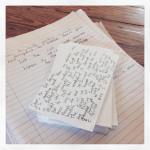
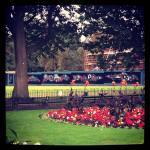
During March and April the poet Emma Must and myself spent a fabulous few weeks out and about round Belfast trying to gather up local people’s memories of the Tropical Ravine in Botanic Gardens. The Ravine is currently closed to facilitate a substantial restoration project and the outreach officer, Cailin Lynn, (all round legend that she is), wanted to make sure the people of Belfast didn’t forget about the building whilst it was inaccessible. She needn’t have worried. The Tropical Ravine, it soon transpired, has a very special place in the hearts of people from all over the city and beyond. Everyone had a story about it. We met elderly couples who remembered the Ravine back in the post-war era, Methody students who snuck out of school to hide and smoke illicit cigarettes behind the tropical ferns, couples who’d enjoyed their first kiss inside the Ravine and children who couldn’t contain their love for the giant goldfish and turtles which populated the little pond. There were, literally thousands of stories about the Tropical Ravine.
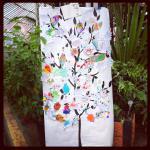


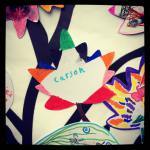

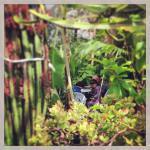


Emma and I visited community groups and local schools. We set up camp for a day in the Palm House and lost about half a stone in sweat as we coerced visitors into adding their Tropical Ravine memories to our memory tree. We spent a fabulous afternoon in the Ulster Museum hearing stories and making art. We wrote our own responses to some of the incredible, and oftentimes bizarre, historical events which have taken place in the Gardens. We had an absolute blast and collated several books’ worth of stories, poems and little pieces of flash fiction which we then passed on to the illustrator Peter Strain, apologising profusely for the fact that the “thirty or so” pieces we’d promised him had actually turned into something closer to three hundred. Peter was a trooper. He doesn’t fluster easy. He took our stories and created the incredible, eye-catching, colourful and intriguing twenty seven metre mural you can currently see snaking round the Tropical Ravine’s hoarding. I’m a little bit in awe of what he can do with a pen.
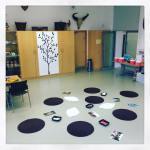



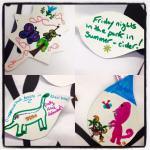
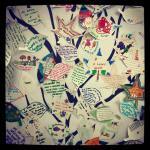
I went to visit the site today. I walked up and down the mural reading out little bits of texts, and remembering the individuals who’d written them as part of our workshops and open days. Children, older people, adults with learning difficulties, couples, parents, tourists, historians and gardeners have all contributed to this amazing piece of art. Most of the participants had never written a poem or prose piece before, many were reluctant to try and yet it’s absolutely incredible to see what they managed to come up with. If you hang around the gardens for long enough you’ll see participants walking up to the mural to look for the piece they contributed. You’ll see visitors taking pictures of the beautiful illustrations. You’ll see locals reading the stories out loud to each other and adding their own memories. It’s the sort of artwork you can’t actually walk past without stopping for a closer look.
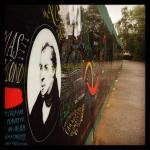
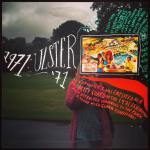
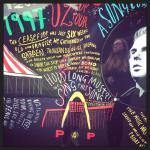
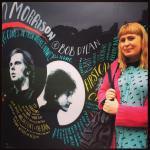
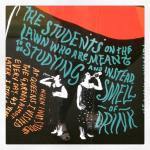
As far as community art goes, (a genre which fails as often as it succeeds), this is pretty inspiring stuff. The workshops associated with the project weren’t just engaging and beneficial for participants, the outcome of the project is also a piece of really beautiful artwork. It’s a fitting tribute to one of Belfast’s best-loved spaces that such a large and diverse number of people have contributed to the piece. Make sure you pop down to Botanic Gardens and spend some time discovering all the little stories folded into ourmural. I’m pretty sure you’ll discover something you didn’t know before. I’m absolutely certain it will make you smile.


August 24, 2016
Talented Friends: Martin Cathcart Froden
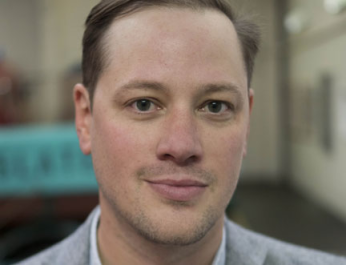
Around six years ago I was in the middle of a distance learning Masters degree at St Andrews. This involved a lot of journeying through Scotland, taking advantage of good friends’ hospitality and spare beds. At one stage I ended up in Glasgow, crashing on the couch of Martin and Lucy Cathcart Froden, (who, at this point had only made one of their three extremely charming little people). I remember sitting up quite late eating good food and drinking wine in their kitchen and talking about the novels both Martin and myself were working on. I remember talking with a kind of forced swagger like I would actually one day be a person who published books but all the time thinking, this is never really going to happen. I do, however, also recall thinking that Martin was the real deal. I knew if he kept going for long enough eventually he’d get there. He was going to be not just a person who writes, but a Writer with a capital W. I can usually tell whether people can actually write even if i’ve never seen a single written sentence. It’s something to do with how they tell a story after a few glasses of wine.
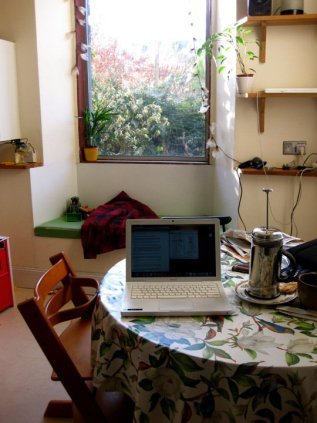
Fast forward six years and here I am sitting on my exercise bike, (where I’ve been doing most of my serious reading of late), holding an actual published copy of Martin’s first novel, “Devil Take The Hindmost.” Not only is it a real book but it’s also terribly good AND it just went and won the Dundee Book Prize. I’m absolutely delighted to be reading this book and watching Martin get some of the success and praise he so rightly deserves. Perseverance is a very underrated concept these days. It’s good to see real talent being noticed.
“Devil Take The Hindmost,” is pretty much the perfect novel to read on an exercise bike. In fact, reading while cycling is almost like experiencing the book in 3d because it’s a novel about competitive cycling and underworld gangs in 1920s London. The plot revolves around Paul, an amateur cyclist who runs away from an overbearing father in Scotland only to find himself drawn into a London crime ring where his interest in competitive velodrome cycling is encouraged and later exploited by the mysterious Mr. Morton, a vicious local gangster. There’s a lot going on in this novel: a traditional love story, a slightly odd, obsession between Paul and his Greek minder/biggest fan, amphetamines, America, crime rings, Olympic hopeduls and a delightful fascination with sarsaparilla. In the hands of a less accomplished writer this novel might have struggled to hold itself together. But it’s quite clear that Martin has carried out a lot of research before writing the book. he knows his subject inside out. However he’s also avoided my pet hate with historical fiction, (jamming a novel so cram-full of facts and research detail it becomes bogged down by the author’s attempt to prove how much he knows about a subject). Martin has held his research lightly and expertly allowing the novel’s fantastic plot, (and sub-plots), and superbly drawn characters, to keep the book trundling along at a very readable pace. This is a story first and a slice of history second, but the two are so expertly fused it’s impossible to see the seams.
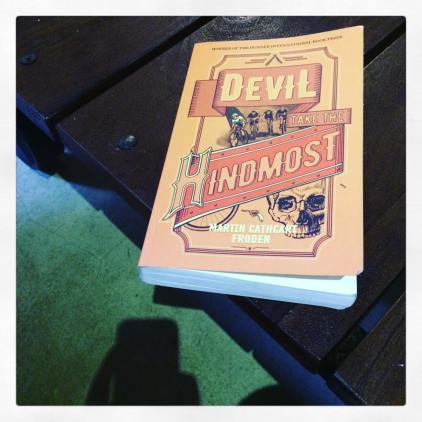
I thoroughly enjoyed reading Martin Cathcart Froden’s first novel. I’d recommend it to anyone who likes cycling, London, 1920s gangland culture or good writing of any kind, (I think that covers just about everyone I know). I can’t wait to see what Martin turns his hand to next. I always knew he’d get there in the end. He was much too talented not to get himself noticed.
“Devil Takes The Hindmost” is published by Freight Books and available to order online from their website. www.freightbooks.co.uk


August 21, 2016
My First Edinburgh International Book Festival
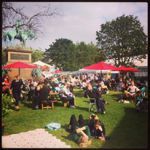
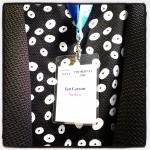
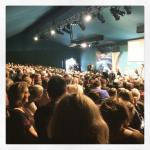
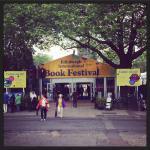
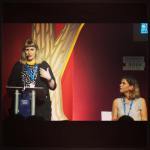
I don’t have many aspirations in life and those I do have are reasonably specialist: I’d like to be the most famous person in the world named Jan Carson. I’d like to be Northern Ireland’s leading expert on BBC medical dramas and I’d like to, one day, hold the Guinness World Record for coordinating the most people simultaneously tea-dancing in the same city. I’d also really wanted to read at Edinburgh Book Festival, just once, properly, with at least five people in the audience, (not including myself, the interviewer and the sound technician). I was pretty sure I’d feature in the Guinness World Record Book long before I made an appearance in the Edinburgh Book Festival Programme. However, on Thursday of last week I got to read in Edinburgh, (not once, but twice), to at least two dozen people.
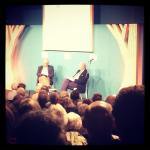
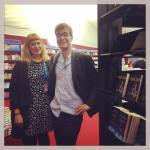

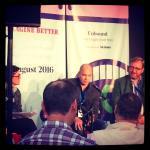
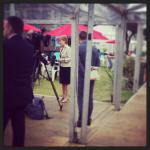
I don’t know what sort of helpful jiggerypockery went on behind the scenes in order to make this happen, but I am very grateful to whoever ultimately took a punt on me. I hope they weren’t disappointed. I read the story about Bon Jovi. (It’s always safest to go with your big hit when faced with an unknown audience). People seemed to like it, (though, in fairness, the audience was largely made up of the Northern Irish diaspora, Edinburgh-based and most likely they’d have been similarly enthused with the Yellow Pages if narrated in a genuine Ulster accent). It was a pretty magical experience, probably never to be repeated and anyone who has the misfortune of crossing my path in the next few weeks is going to hear me recount the same five or six anecdotes ad nauseum. The basic gist of what I’ll be telling anyone willing to listen is, “EIBF is so brilliant, it is like heaven in medium-sized marquees AND they even look after your hand luggage.” Listed below, just in case I don’t get to evangelise you personally, are my very favourite things about Edinburgh Book Festival.
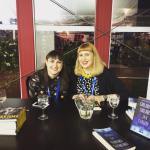

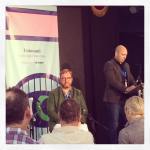
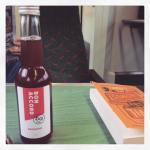
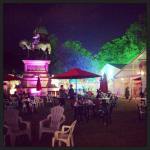
There is an author’s yurt where you can hide from your hordes of fans or, if you don’t yet have hordes of fans, sit quietly, sipping free orange juice and trying to work out if the person opposite you is familiar because they are a genuinely famous person or just because you’ve walked past them three times already today.
There are separate author toilets. They are clean and, as far as festival toilets go, smell very nice. They have soundproof stalls. This is good if you are nervous and need to have a last minute practice run of your reading without looking like an eejit in front of the other authors in the author yurt. It’s also good for singing to calm the nerves.
As previously mentioned, there is a left luggage area for housing your pull-on suitcase etc. All items of luggage are efficiently labeled with your own name, thus avoiding the possibility of an author accidentally lifting another author’s briefcase containing a yet-to-be published manuscript or really good idea for a crime novel, (this is what I imagine would happen if EIBF was an early 90’s kids’ movie). I was, however, quite surprised when I collected my backpack at the end of my final festival day, only to discover my label had been switched with the poet Alice Oswald’s. I briefly considered stealing her identity and becoming a poet, then remembered that I do not know the difference between a sonnet and a couplet and decided to continue being myself for the time being. It’s nice to have options though.
They give you free stuff in a free bag: chocolate, books, fancy hand cream, a bottle of rhubarb lemonade. There wasn’t a single pack of free Tayto crisps in sight; further proof that I’d finally made it to a not-in-Northern Ireland festival. I have given my dad the free book hoping he thinks I have actually bought him something nice from my holidays.
They treat all their authors the same. Same hospitality, same welcome and same lovely hotels with white fluffy bathrobes and Eggs Benedict for breakfast whether you’re a three time Booker nominee or a just-beginning-slightly-over-awed-with-everything young author. The impact of this should never be underestimated. Writers feel like the words they write matter, if they are treated as if they matter. Good work EIBF.
They have their own paparazzi team who set you in front of a large white sheet and take rapid fire photographs at high speed from four different angles. Click. Click. Click. Click. Until you forget how to hold your mouth in a smile. Later, the best of these photos, (or the ones which look most like stills from one of the edgier Marks and Spencer’s adverts), are printed out on high quality tea towels and displayed around the festival village so you are confronted by Ian Rankin or Kate Tempest or your own mug, grinning inanely, every time you emerge from the author’s toilets.
There is a bookstore. It is large and, as with all aspects of EIBF, staffed by people who seem to genuinely like books, who will take time to comment on your purchases and recommend other books you might like, even if there are many, many other people in the line behind you, all trying to buy signed copies of the latest Alexander McCall Smith. In hardback.
Which leads me to the staff, who are both remarkably efficient and also unbelievably friendly/approachable/normal. Everything I attended seemed to start on time and end on time and be appropriately mic’d and social media’d, (good job Colin). There were thousands of bookish people, possibly millions, swarming all over the festival, (some very elderly, some very young, others, like myself, just easily confused which comes with its own set of needs), and yet I never once saw a staff member look harried or too busy to stop and chat or offer to fetch more free orange juice, (I did discover an enormous cave like stash of pure orange juice behind the pull-on suitcases in the left-luggage room and subsequently began to wonder if orange juice is to EIBF what certain banned substances are to other, more rock n’roll festivals).
They also had people in the audience who ask daft questions: mumblers, i won’t bother using the microphoners, stander uppers, “it’s not really a question but I’m asking it anyway” types, and many, many, “would you ever get to the point” types. I was delighted to realise that inane questions from the audience is not a problem particular to Belfast. Wherever there are literary events in the world there will always be people in the audience compelled to stick their hands up and wave frantically before they’ve thought of anything to say.
The guy from The Charlatans was there. He looked exactly like himself, or Damon Albarn circa 1994.


August 19, 2016
Guest Blog: Maire Robinson

A Tomato is Helping Me Write My Novel
“Writing is a deep-sea dive. You need hours just to get into it: down, down, down. If you’re called back to the surface every couple of minutes by an email, you may never get back down.”
-Dave Eggers
My biggest obstacle when it comes to writing is focus. This is not a new issue for me, as I discovered recently when looking through an old box of childhood writings. Turns out I wrote a lot of stories when I was younger. Or, to be more accurate, I started a lot of stories. I was adept at beginnings, middling at middles, and catastrophic at endings. As I browsed page after scrawled page, I found stories that I had abandoned in mid-paragraph, mid-sentence and on one occasion, mid-word.
I’m not alone in having issues with focus. If you think about it, imaginative leaps and flights of creative fancy are an asset for writers, particularly at the start of a writing project. New ideas and beginnings are the easy part. The challenge begins when we have to settle on one idea and see it through to fruition: how to focus on that, and only that, and avoid the many and varied pitfalls that are waiting to distract us?
Now, more than ever, it has never been easier to choose an online form of procrastination over writing. When struggling to write a particularly tricky scene, I’ve often been tempted to “just take a little break to check my email”, only to find myself emerging from an internet vortex hours later with a cup of cold tea beside me, a sense of impending doom beating at my temples, and that scene still resolutely unwritten.
While technology provides plenty of distractions, in recent years it has also offered some possible solutions. Internet restriction programmes like Freedom and Anti-Social allow you to block distracting websites and social media apps from your device for a period of your choosing. With Write Room (Mac) and Dark Room (Windows), you can go back to basics and use your computer solely as a word processor. A more extreme option is The Most Dangerous Writing App which will delete your work-in-progress if you stop typing for more than five seconds. This I haven’t tried as the very thought is enough to give me an anxiety-induced heart attack.
The option I’ve found most useful in my own writing is something called The Pomodoro Technique It’s a time management tool that was invented in the late 1980’s by Francesco Cirillo. Although it was first developed for the corporate world, I’ve found that the technique can equally be applied to creative tasks.
It’s based on the idea that bursts of activity interspersed with short breaks can help to increase mental agility and productivity. The name is derived from the Italian for “tomato” because Cirillo developed the technique as a student when he used a tomato-shaped timer to divide his study sessions into twenty-five minute intervals.
You can order your very own pomodoro timer and book online but I’ve found that neither are strictly necessary in order to use the technique, which in essence is a pretty straightforward one. You simply:
Choose the task you want to complete and make a note of it (e.g. “Write chapter 11 of novel”).
Calculate how many “pomodoros” (twenty-five minute intervals) you will need to complete your task (e.g.: four “pomodoros”).
Set your timer for twenty-five minutes (I use the timer on my phone).
If any distractions enter your mind (new ideas, pressing concerns, etc.) make a note of them to come back to later but continue with your task.
After twenty-five minutes, take a five minute break no matter what (get up, have a good stretch, nip to the loo, etc.).
Repeat the cycle.
After four cycles you can take a longer break.
It really is a simple technique but I’ve found it to be an effective one both in terms of minimising distractions and achieving focused productivity in my writing. Focus will probably always be an issue for me, but with the Pomodoro Technique as part of my writing routine I feel confident about completing my second novel. Who knows, I may even go back and finally finish those abandoned childhood stories.
Máire T. Robinson is a Dublin-based novelist and short story writer. She was nominated for a Hennessy Literary Award in Emerging Fiction in 2012. In 2013, she won the Doire Press Chapbook Competition and her collection Your Mixtape Unravels My Heart was longlisted for the Frank O’Connor International Short Story Award. Her widely acclaimed novel Skin, Paper, Stone was published by New Island in 2015 and was shortlisted for the inaugural Annie McHale Debut Novel Award 2016. You can find Máire’s blog at www.mairetrobinson.com.


August 17, 2016
Everything Leaves Marks, Even Water
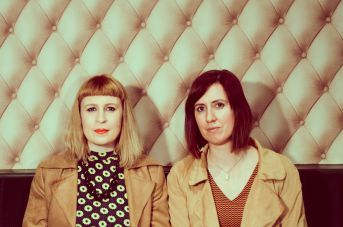
I’ve said it once, I’ll say it again, writing is a pretty anti-social pursuit. Ninety percent of my spare time is spent alone, in coffee shops wearing bucket headphones and talking to myself in a barely hushed voice as I try to get my characters to speak like actual human beings. Unsurprisingly enough, every time I get the opportunity to step outside my little wordy bubble and work with another artist, I’m tripping over myself with enthusiasm. During the last few years I’ve been lucky enough to collaborate with visual artists, musicians, playwrights and even a fantastically talented cake artist. It’s been a roller coaster of a lesson in humility, imagination and the importance of wine as creative fuel, (all my best collaborative projects have taken shape over a nice glass or two of red).
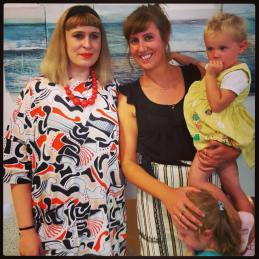
Last Christmas, having had such an amazing experience collaborating with singer-songwriter, Hannah McPhillimy on my first novel, Malcolm Orange Disappears, I began thinking about who I could start dreaming with next and what an artistic response to my new short story collection Children’s Children, might look like. I didn’t think about it for very long. I knew straight away that I wanted to work with Orla McAdam. Orla is not only one of my favourite people on the planet, she’s also an amazing artist. She teaches high school kids to approach their artistic practice with the kind of enthusiasm, imagination and playfulness which she brings to everything she does. I know this because I go to see her students’ end of year art exhibition every year and I’m always astounded by how daring and brave and uninhibited the kids’s work is. It’s pretty obvious that Orla has infected her students with her own passion for seeing the world a wee bit slant.
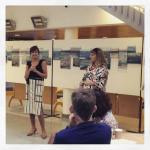
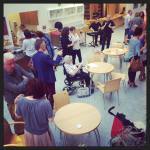

I asked Orla if she’d be interested in putting together an exhibition of 15 new pieces responding to each of the 15 stories in Children’s Children. She said yes straightaway and began working away to produce the artwork: taking photos, flinging paint around, chopping my book up with a scalpel. Her dining room table disappeared under a mountain of ink-stained paper. I was worried she wouldn’t get finished in time. (I did GCSE art about a million years ago and I know just how much work would need to go into 15 pieces). Orla ended up creating 32 canvases. They’re stunning both as individual pieces of work and also as a sort of magical realist seascape installation, in the particularly striking way she’s arranged them for the exhibition which opened last night in the Arches Healthcare Centre as part of EastSide Arts Festival.

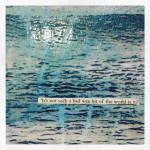

We’ve called the exhibition, “Everything Leaves Marks Even Water.” It’s a line taken from one of my stories. In a sense it summarises the whole collection; these are stories about how life has marked my characters, both positively and negatively; the characters, in turn, are chockfull of my own, clumsily translated, experiences of being marked by everything life’s thrown at me. Last night Orla spoke beautifully about her own experience of being marked by difficult experiences and also the community of support she’s found in the Lagan Dragon’s: a Belfast-based dragon boat racing team for Breast Cancer survivors and their supporters. The water, which dominates the exhibition, has come to be a source of healing for Orla and many of her fellow Dragons. It seemed really appropriate that all funds raised through sales of the art work should go to the Lagan Dragons and we’re delighted to announce all 33 pieces have now been sold. Hopefully we’ll be able to announce how much the project has raised really soon.
“Everything Leaves Marks Even Water,” is on show at the Arches Healthcare Centre until the end of August. Please drop in and enjoy Orla’s beautiful artwork. I’m so proud to be her friend and fellow collaborator. I can’t wait to see what she begins working on next.


August 15, 2016
Inviting Everybody to the Party
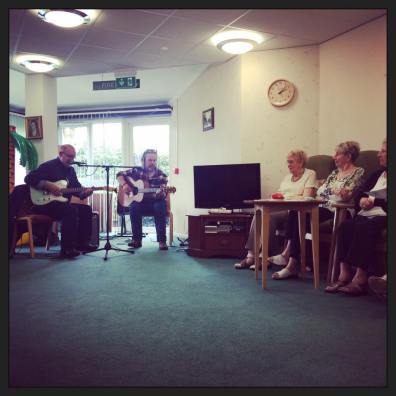
About six months ago I met Rachel and Jackie of EastSide Arts for coffee. Rachel and Jackie are always asking me out for these so-called “wee coffees.” They begin quite innocently with cappuccino and casual chit chat and usually end about an hour later with plans to take over Stormont or start our own radio station or host Glastonbury in Victoria Park. It is always dangerous having coffee with Rachel and Jackie because four months after you’ve casually said the words, “wouldn’t it be totally mad but really great if we could…” you will receive a phone call/email/hasty aside at the back of a gig, informing you that you are now in charge of bringing said, “totally mad,” idea to fruition. Two months after that, you’ll find yourself standing at the front of a Presbyterian Church, wearing a kaftan and belting out Creedence Clearwater Revival to a room full of pensioners and ukelele players. You will wonder how you arrived at this strange and beautiful place. You will wish to stay for as long as possible.



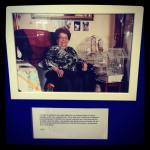
Six months ago the three of us sat in Cafe Nero and made a list of things we’d like to see happen in the East. We were using words like community and inclusion and welcome: all the usual funding buzzwords. We wanted to create places and spaces within the EastSide Arts Festival which would include everyone who lives in our little bit of the city. As per usual I was thinking about older people. There are a lot of them in the East as this part of Belfast has more nursing homes and residential care facilities than any other area. Over the last few years I’ve had the absolute joy of getting to know some of these older people and many of them have become good friends. They are such a rich part of our community here in the East it seemed ludicrous to think that -because of access or health issues- many of them wouldn’t get to attend our arts festival. “Wouldn’t it be totally mad, but also really great,” I suggested, “if we could take the gigs into the nursing homes and residential care facilities.” “Totally mad,” said Rachel. “Totally mad,” said Jackie and, in that brief, espresso-charged moment, Highlights from Home was both conceived and, almost instantaneously, birthed.
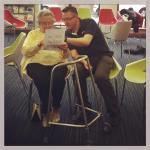
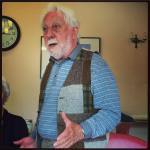

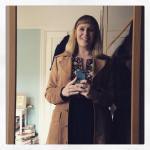
Fast forward to last Thursday when we kicked off our programme of Highlight from Home events with Anthony Toner and Ronnie Greer playing jazzy blues, (or is it bluesy jazz?), in a local fold, followed by Duke Special playing a Victorian organ and singing Ruby Murray covers, Kaz Hawkins gigging up a storm, beer tasting with the Boundary Brewing crew and a fabulous spoken word event from Joan and Sam McCready. Five little gigs in total. Almost 150 older people included. Not as any kind of afterthought or ad-on to the proper festival, but rather as an integral part of who we are here in the East. Each of these gigs was a little sample of exactly the same performance the general public were getting to experience in our arts venues. 150 older people enjoyed every second of their EastSide Arts Festival experience, (well, maybe 148- there were those two older ladies more interested in the apple tart than Anthony Toner). That’s a heck of a lot of tapping toes, and sing-alongs, cups of tea and chances to chat with visiting artists, care staff encouraged and residents left smiling long after the performers went home. Not such a totally mad idea after all.
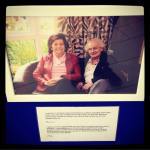

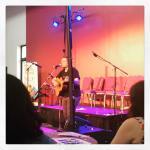

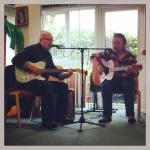
On top of our Highlights from Home gigs we had a packed house of older people in for the ever-popular Jazz on a Summer Afternoon in the Park Avenue, while a large group of our older residents had their photography included in the beautiful Humans of East Belfast exhibition, currently on display in Connswater Tesco. (Huge thanks to photographer extraordinaire, Carrie Davenport and all the young people who helped with the shoot). But my favourite older people event of the festival was definitely last night’s, special, Dementia-Friendly, intergenerational Play It Again Jam, in Strand Presbyterian.

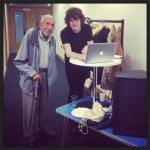
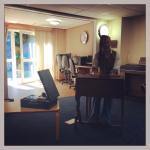
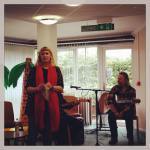
Hannah McPhillimy, Rory Nellis and the Belfast Ukelele Jam had the whole house singing, (clapping, air punching and drumming), along to vintage hits while our resident “cake artist” Hilary Copeland, provided her usual, fabulous spread of 60s themed cakes and buns. (I actually think the East might have run out of glade cherries last night). There was a whole heap of joy in the room, so many, beautiful, smiling faces and it really didn’t seem to matter whether you were 80 or 18; everyone sounded the same when they were singing, “Brown-Eyed Girl” at the top of their lungs. As the older attendees were leaving last night, still “sha la la’ing” as we helped them into their taxis, one lady took my hand and said, “thank you for inviting us.” It’s the kind of thing most polite people say when they’re leaving a dinner party or a soiree of some sort, but last night it sounded a little different. The lady was smiling as she spoke and there was also a tiny, little tear in the corner of her eye. It didn’t sound like everyday politeness. It sounded like she knew we were trying to invite everyone to our party, and though last night was wonderful, there are still lots of people in the East we haven’t invited yet.
This afternoon, I told Jackie and Rachel we need to have another coffee. It’s time to get working on the next round of totally mad ideas.


July 30, 2016
John Hewitt Summer School 2016 – Why Weren’t You There?
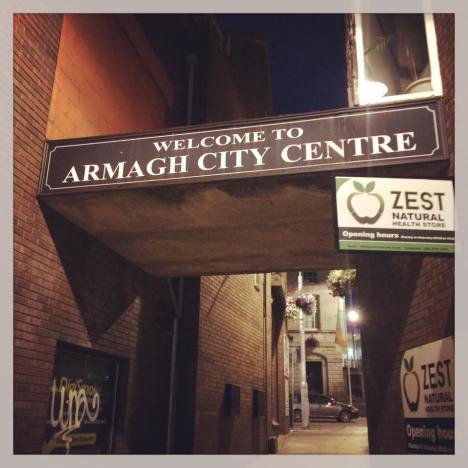
I’ve just returned from a few days in sunny/rainy/forty seasons in one day, Armagh. I go there every July. There’s a bar with a talking parrot in the window and a reasonably decent chip shop but it’s hardly the Costa del Sol. They don’t even have a two p machine. I’ve made the pilgrimage to Armagh every year for the last five years because of the John Hewitt Summer School. As far as non-negotiable dates in my calendar go, it’s up there with Christmas, Bob Dylan’s birthday and the St Patrick’s Day Tea Dance. I would’t miss it for the world.
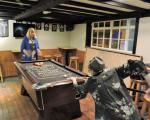

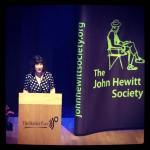
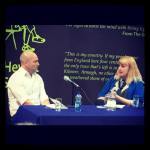
The John Hewitt Summer School shouldn’t be as good as it is. On paper it’s a bunch of very different people, all locked up together in a provincial arts centre, filling every waking moment with readings, lectures and the consumption of fruit scones for almost a full week: the literary equivalent of Big Brother, (with slightly more highfalutin’ chat). In reality, it’s a little bit like heaven. I always relax. I always have wonderful conversations. I always return to Belfast, a little tired, but enthused and full of ideas. (Though usually broke because I’ve been tempted into buying even more books by the good folks at No Alibis). I’m always thankful for the time the Summer School affords me to be stuck in one place with people I love and rarely get more than a brief passing chat with.



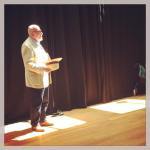
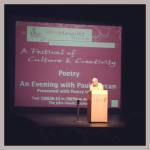
Over the years the Armagh week has introduced me to new writers I’d not encountered before: Gavin Corbett, Christine Dwyer-Hickey and, this year, Jane Yeh’s wonderful, quirky poetry. It’s also allowed me to spend time listening to old favourites and it was a particular treat to have a chance to interview Donal Ryan and to hear Sinead Morrissey read from her forthcoming new collection. None of this happens by chance. The John Hewitt team are tremendous people: every one of them busts an absolute gut to make magic happen in the Marketplace Theatre. From Stephen’s social media wizardry, to Paul and Bill’s fabulous hospitality and welcome, Hilary’s superb organisational skills, Paul M’s killer introductions and Tony’s general steering of the good ship John Hewitt, (not to mention his fabulous t-shirts), the whole crew ensure that this isn’t just an ordinary Literary Festival, it’s a space focused on nurturing all the people who attend. Writers, readers and those still working out where they fit into the world of words are all made to feel equally welcome and therein lies the reason why I keep coming back to Armagh every July. The only thing you need to feel included at the John Hewitt is a furious love of words, (a love of scones also helps).
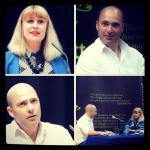

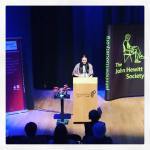
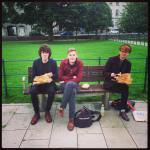
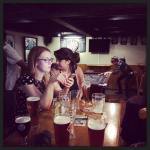
The John Hewitt Summer School attracts a bunch of folks who were just people I kind of knew five years ago, then they became friends and later community. Now, I honestly couldn’t muddle through the process of writing or being a writer without the encouragement, honesty and long conversations I get from them on an almost daily basis. Communities don’t just happen- they’re cultivated. This weekend I’m thankful for the John Hewitt team who’ve poured their energy into creating a space where good words have had room to breathe, where people have had space to grow into themselves and community has happened, quite naturally, over the fruit scones. I really hope there were people at the Summer School this week who’ve found the folks who’ll be holding them together five years from now.


July 21, 2016
Postcard Stories Europe 2016: Week Two
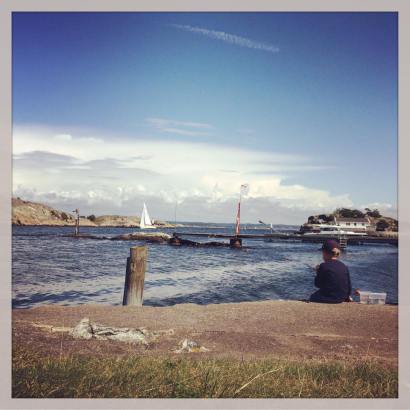
July 14th – Gothenburg
Rachel Kennedy
Swedish children are better behaved than children in other European countries. England being the first which springs to mind. Therefore, it is much quieter in Sweden than any other European place, except perhaps, the Northern extremities where there are less than a dozen children in total on account of the cold which is both unsuitable for outdoor play, and also a kind of natural birth control.
In Gothenburg we see one such preternaturally quiet child sitting upright in its pushchair while his, (or perhaps, her for it’s quite difficult to tell with Scandinavian children), parents hang shopping bags from the pushchair’s handles, hide groceries down the side of the seat and drape great piles of just-purchased clothes across its hood. The overall effect is reminiscent of the 1980s boardgame, Buckaroo. It is only when the child’s father attempts to balance a full coffee table across its lap –potentially cutting off circulation to legs, feet and digestive organs- that the child objects. But even this is not a yell, so much as a polite little noise, similar in tone and volume to a stifled cough.
July 15th – Styrsa Island
Elizabeth Donaldson
You go to the island for swimming. It is reasonably cold and very windy. You only half intend to swim but every time someone asks you why you are here you say in a voice which is your own voice but firmer, (like bread left out on the kitchen bench), “oh yes, I have come to the island for swimming.”
The people on the ferry and in the teahouse seem to believe you. They say, “yes, the island is very good for swimming.” They point you to a place with grass and rocks and a slip of a beach, no bigger that a big toe nail and you say, “thank you, that will be perfect for all my swimming.” But really you are thinking that you had not envisioned seaweed, or fat men lounging in small trunks, or jellyfish, or those shock-haired children dipping prawns on string in the hope of snaring a crab.
“I have come to the island for swimming,” you tell yourself and in you go, through the flat curtain of seaweed, up to your armpits and beyond. Your toes curl into the icy water. It is only when your head crowns the first wave and you are –every cell of you- wide awake and singing, that you finally admit you have come to the island for so much more than mere swimming.
July 16th – Gothenburg
Anna Gale
In 2014, the Italian artist Alberto Frigo began photographing every object which his right hand touched: coffee cups, pens, cutlery, steering wheels, his own face, shaving. Today it is 2016 and Frigo has taken almost 300,000 of these images. He intends to continue photographing every object which his right hand touches until he dies, or it is 2040. If I was particularly good at maths I would be able to estimate approximately how many images he will then have in his collection. I am not particularly good at maths. I am good at English, and I like the way Frigo’s tiny photographs, reduced to stamp-sized thumbnails and arranged across the gallery wall look like writing from a distance. Up close, with a magnifying glass, I can see that each photograph is a small story, and each line of photographs is also a story, and all the photographs together are the kind of story which takes a whole life to tell. The word I’d use for this is saga.
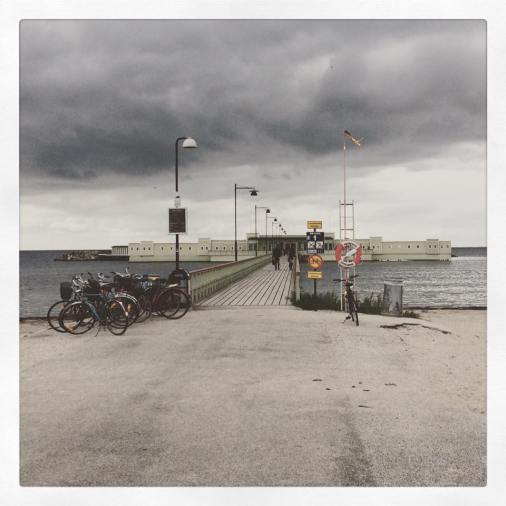
July 17th – Malmo
No Alibis Crew
For the last number of years, the major bridges of the world –Golden Gate, London, Sydney Harbour etc etc- have been debating their own importance, or lack thereof. Whilst it was universally agreed that all bridges were to be valued for their ability to hold things together and let other things pass, those major bridges included in the discussion could not agree upon which particular bridge should be considered most important. (It should be noted that the sound of bridges talking is not something which the human ear can hear or naturally interpret seeing as it is a water-based language, primarily transported from one bridge to the next by river, or occasionally rain).
Various arguments for self-importance were filed and later rejected: historical significance, aesthetics, ability to withstand earthquakes/tidal waves/attacks from movie-dreamt monsters. But it was, in the end, the bridge between Malmo and Gothenburg which won. “I’m the first bridge which comes up in a Google search,” it said. “I’m The Bridge, no further description necessary.” And although this made the rivers feel utterly ancient, they still understood that the argument was now over and swam on.
July 18th – Copenhagen
Sharyn Ruseckas
The guide book tells us that there is a certain square in Copenhagen which is so very beautiful it will surely make even the most cynical soul, weep. We go to great lengths to locate this square. It is between the round tower and the street which only sells burgers and artisan ceramic pots.
“Is this is?” we say for it is almost identical to every other square in Copenhage: small fountain, cobbled streets, restaurants selling over-riced wine in goldfish bowl glasses. We check our eyes. They are not even a little damp. We consider becoming disappointed but instead opt for wine in goldfish bowl glasses and, after this, more wine.
Then, as if by some Scandinavian brand of magic, the cobbles appear to be more poignantly cobbled than before, and the child dragging a black balloon round the fountain’s edge has become a metaphor for something so very beautiful, not to mention the old man playing sad, sad oboe, his hat upturned in anticipation of coins. We check our eyes as we leave the square and maybe, just maybe, they are a little wetter than usual.
July 19th – Copenhagen Airport
Nicky Bull
When they weighed her suitcase at Copenhagen Airport it was three kilos heavier than when she’d left home two weeks previously.
“That can’t be right,” she said and listed the various toiletries, the paperback novels and bars of Cadbury’s chocolate she’d left behind in Mainland Europe. “I haven’t purchased anything here. My bag should be lighter than it was before, not heavier.”
“Perhaps it’s all those memories you’re bringing home with you,” the check-in girl suggested and she said it was more likely to be dirt because she was already tired and there were many miles to travel before bed and it was hard for her to see the romantic side of the situation when she was being asked to pay an excess baggage fee.
